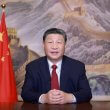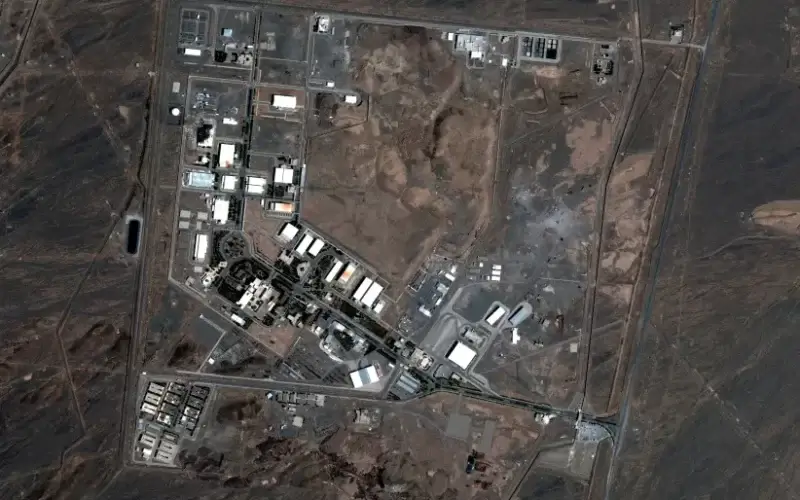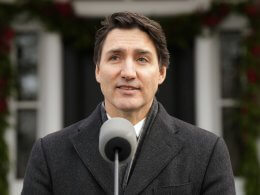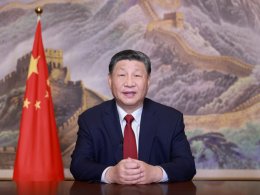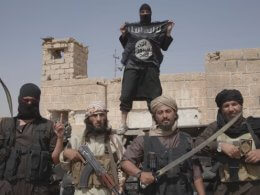In Natanz, Iran, the Islamic Republic is now trying to operate a new workshop to make parts for uranium enriched centrifuges with machines transferred from the now-closed Karaj facility. The report on Iran’s actions comes from the United Nations (U.N.) nuclear watchdog, the International Atomic Energy Agency (IAEA).
The measures by Tehran to operate a new workshop area raises concerns about the Iranian regime's ongoing nuclear activity, particularly as its government and the West are working to revive the 2015 Joint Comprehensive Plan of Action (JCPOA) which will provide economic sanctions relief to the regime.
The news by the U.N. nuclear watchdog is making many officials concerned, given Iran's plans to create machines that could produce enriched uranium much quicker than first-generation machines violating the 2015 nuclear agreement.
Natanz is Iran’s number one enrichment facility that houses its commercial Fuel Enrichment Plant and Pilot Fuel Enrichment Plant. The facility contains several underground buildings designed to hold 50,000 centrifuges and six above-ground installments. In 2002, the Iranian government tried to move its gas centrifuge research and development operations to Natanz, but it did not remain secret, thanks to opposition groups.
During the Bush administration, the administration enacted a series of cyber-warfare operations aimed at damaging Iran’s growing enrichment activities with the help of Israeli intelligence agencies. The facility’s computer systems that commanded the centrifuges were targeted and caused the centrifuge rotors to spin uncontrollably fast. The cyber-warfare operations caused the centrifuges to break, and after the Obama administration came into power, it increased the rate and severity of attacks on the facility’s enrichment complex.
According to the International Atomic Energy Agency (IAEA), the new workshop in Natanz has enriched hundreds of advanced centrifuges, with some reaching the purity level of 60 percent and 90 percent weapons-grade level needed for a nuclear warhead. The 2015 nuclear deal, on the other hand, stated that Iran could only enrich its uranium up to 3.67 percent. The report by the IAEA goes on to say that the new workshop in Natanz has a commercial scale enrichment plant underground to protect itself from any potential airstrikes from Iran’s enemies.
In past IAEA reports, Iran has decommissioned and replaced thousands of centrifuges at Natanz because of damage from cyber-warfare attacks but has quickly recovered from such attacks.
One of the crucial ways that the International Atomic Energy Agency (IAEA) corroborated its findings on Iran's activities was thanks to the installment of surveillance cameras in the workshop. The U.N. nuclear watchdog removed the seals from the uranium enriched centrifuges but refused to disclose where the new workshop in Natanz was. The exact location of the workshop is of vital interest to countries like the United States and the Islamic Republic's foe Israel given the past sabotage attacks by Israeli officials.
In past and even present years, Israel has undertaken covert actions against Natanz and other nuclear facilities through cyber-warfare and targeted assassinations of nuclear scientists. In late November of 2020, Israel was responsible for assassinating Iran’s chief nuclear scientist Moshen Fakhrizadeh using an A.I. killing machine in Iran. Israel has also engaged in tampering with the electricity of these facilities and hacking into their systems.
In early March of 2022, Iran announced that it had arrested several members of a spy network linked to the Israeli government planning on sabotaging the Fordo facility, another underground uranium enrichment facility located outside the city of Qom. According to Iranian government officials, the members of the spy network tried to approach an employee at the facility to gain information about advanced centrifuges at the facility.
The Islamic Republic of Iran informed the IAEA that the newly created advanced centrifuges would begin to operate at the new site the same day it told the organization. In addition to installing surveillance cameras in the workshop in Natanz, the IAEA has also installed surveillance cameras there. Before Iran decided to move material and parts from the now-closed Karaj facility, the Islamic Republic disclosed to the U.N. watchdog agency that it was moving the workshop's activities to another site in Isfahan.
The news from IAEA is sure to make countries like Israel and Saudi Arabia concerned and not at all alleviate their concerns with the Biden Administration’s soon-to-be revived nuclear agreement with Iran. Ever since the Obama administration created the first nuclear agreement with Iran, Israel and other Gulf Arab states have argued that Tehran cannot be trusted to decrease uranium enrichment and work in nuclear facilities. Israeli prime ministers from Bibi Netanyahu to Naftali Bennett have continuously warned Washington of Iran’s actions stressing the need to opt-out of negotiations and increase sanctions on the regime's activities.
According to researchers and analysts like Andrea Stricker, research fellow at the Foundations for Defense of Democracy (FDD) on nonproliferation and security, the “relocation of Iran’s centrifuge manufacturing facilities underneath mountains to protect them from sabotage or military strikes is fundamentally an own-goal by the West.” Stricker points out that Washington and its allies are “seeking a nuclear deal that permits Iran to accomplish a rapid breakout to atomic weapons at a time of its choosing”.
Countries like the U.S. and its European allies should “abandon the JCPOA framework and demand that Iran reinstate full IAEA monitoring of its nuclear program given Iran’s past nuclear weapons activities and provocative escalations,” explained Andrea Stricker. Stricker, like many analysts, believes that it is necessary for the IAEA to monitor Tehran’s program to ensure against a clandestine breakout. Stricker also recommends that Western countries should “not agree to lift sanctions unless the Islamic Republic fully dismantles its uranium enrichment program and permits intrusive monitoring.”





